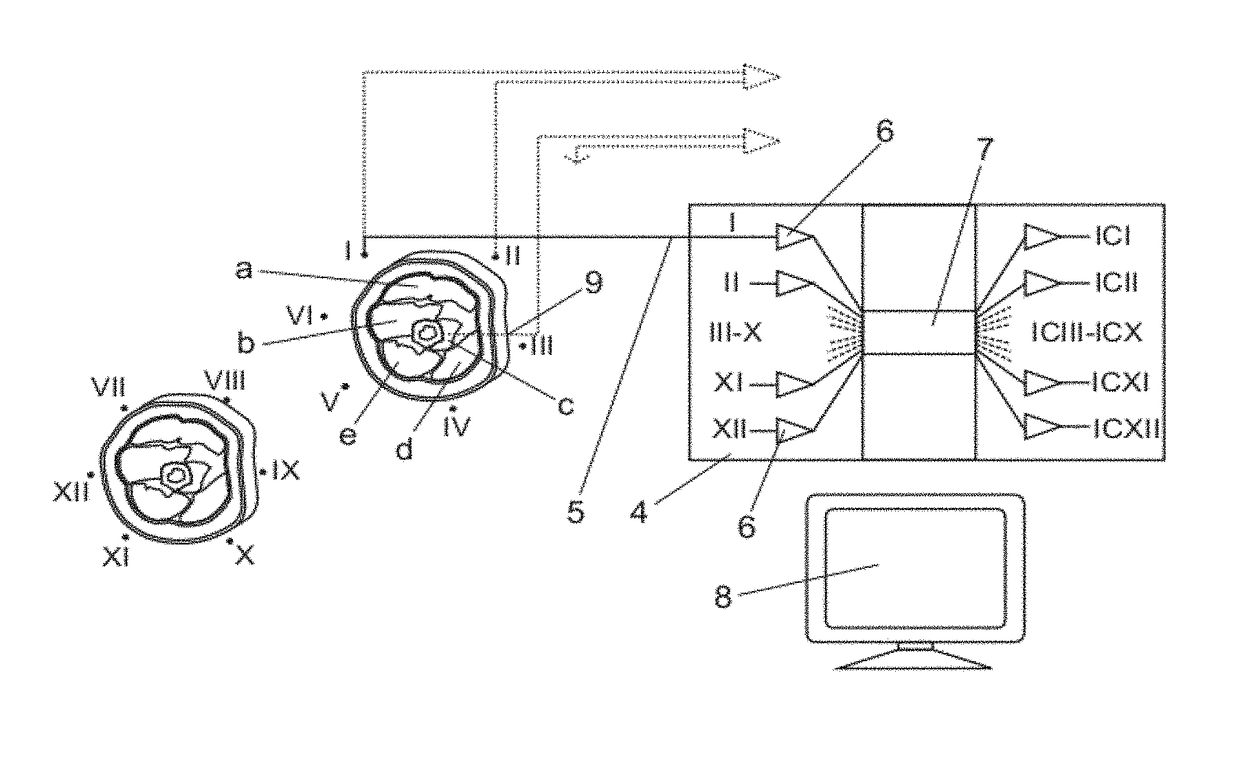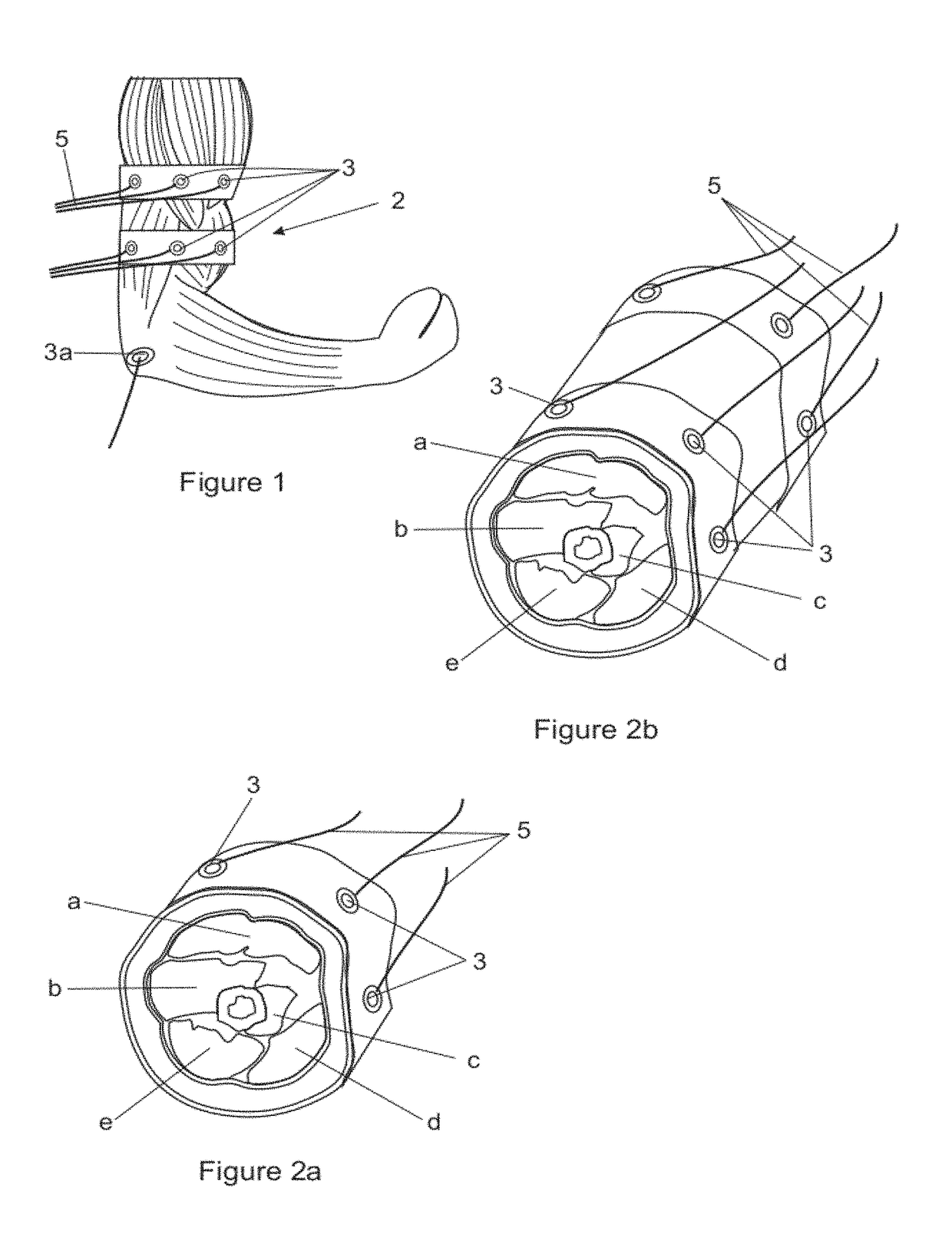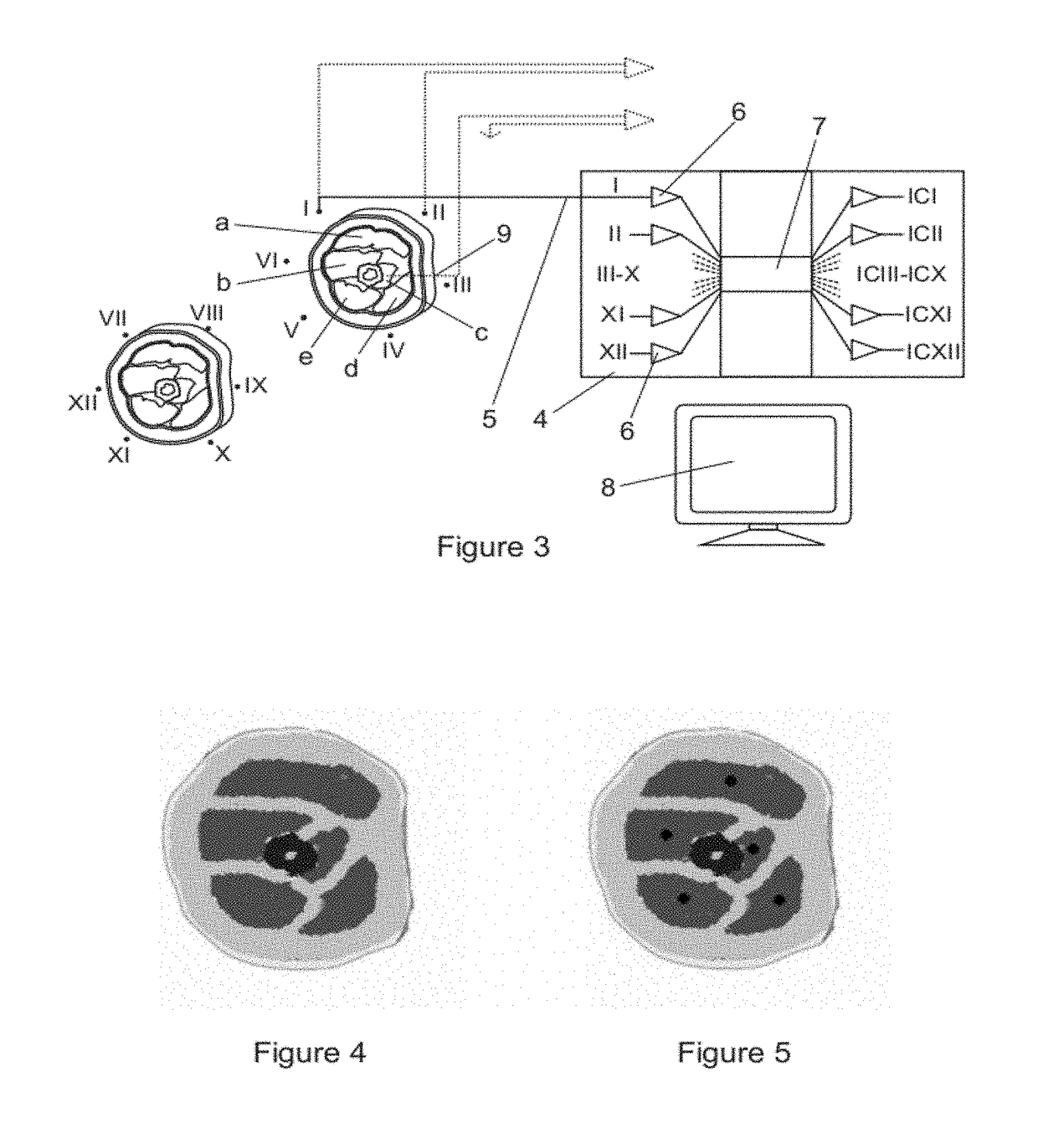Non-invasive deep muscle electromyography
a deep muscle electromyography and non-invasive technology, applied in the field of deep muscle electromyography, can solve the problems of inability to investigate the deep muscles located near major blood vessels, nerves, viscera, etc., and achieve the effect of not being able to investigate the superficial muscles, reducing the range of application, and reducing the number of procedures
- Summary
- Abstract
- Description
- Claims
- Application Information
AI Technical Summary
Benefits of technology
Problems solved by technology
Method used
Image
Examples
Embodiment Construction
[0028]In one implementation of the invention the example of electromyography of the deep muscle brachialis (c) of the upper arm (2) as applied to an actual human subject in a laboratory setting, is given. In this implementation of the invention two arrays of suitable surface electromyography electrodes (3) are applied to the skin of a patient with the electrodes being arranged in two rings encircling the group of muscles in the appropriate part of the upper arm in which the relevant part of the brachialis is located.
[0029]In this particular instance, the two arrays of electrodes comprise a total of 12 electrodes, with 6 electrodes per ring that are arranged generally equally spaced around the periphery of the arm. The electrodes, that are indicated in FIG. 3 by the Roman numerals (I, II, III, IV, V, VI, VII. VIII, IX, X, XI, XII) sequentially in a clockwise direction around the two rings, are connected to a processing unit (4) by means of flexible conductors (5) in the usual way.
[00...
PUM
 Login to View More
Login to View More Abstract
Description
Claims
Application Information
 Login to View More
Login to View More - R&D
- Intellectual Property
- Life Sciences
- Materials
- Tech Scout
- Unparalleled Data Quality
- Higher Quality Content
- 60% Fewer Hallucinations
Browse by: Latest US Patents, China's latest patents, Technical Efficacy Thesaurus, Application Domain, Technology Topic, Popular Technical Reports.
© 2025 PatSnap. All rights reserved.Legal|Privacy policy|Modern Slavery Act Transparency Statement|Sitemap|About US| Contact US: help@patsnap.com



